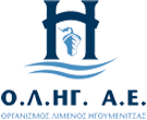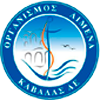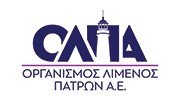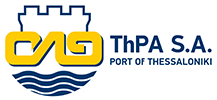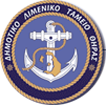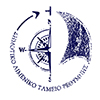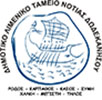The city of Chania is built - according to the archaeological research - on the ruins of ancient Kydonia, which according to mythology was founded by king Kydon.
During the ancient period (3.000-2.800 B.C.),as well as the modern world history, the old harbour was used by the ancient Minoans, as a crossroad of all five Continents. Τhis harbour hosted ancient Kydonia one of the most important cities of ancient Crete, to the late 7th century A.D., while it was conquered many times during the past by Romans, Byzantines, Arabs, etc, till the end of the 19th century, when it was liberated. Chania – as well as the rest of Crete - was united with the rest of Greece in 1913 with the significant help of the Greek politician Eleftherios Venizelos.
Chania is a crossroad of religion and civilization, offering fascinating historical and natural attractions. Τhe passengers can visit many places of cultural interest such as Museums and historical sites, many monasteries and old forts and sandy beaches, imposing mountains, impenetrable gorges, holy caves, blessed rivers and lush, green plains thickly covered with olive and citrus trees.
The old town of Chania. The old town has been inhabited since the Neolithic Age and extends along the Venetian port of Chania from Firkas Fortress and the Maritime Museum to the Sand Gate. The tour of the Old Town of Chania will impress visitors with its narrow cobblestone streets, restored mansions, Venetian harbor and picturesque neighborhoods and will travel them through Arab, Byzantine and Venetian cultures that passed through. Visitors can stroll through the narrow and picturesque streets of Chania's Old Port and the Old Town overlooking the lighthouse, and combine a stroll through the characteristic Chania Market building.
ARCHAEOLOGICAL SITES AND HISTORICAL MONUMENTS
•Ancient Kydonia (Proto-Minoan settlement of Kasteli),"Kasteli" hill and "Splanzia" district, old city of Chania. The Minoan Kydonia was built at the current location of the old town of Chania. Kydonia was the third largest town of Minoan Crete, after Knossos and Phaestos.
•Ancient Aptera, at Megala Chorafia, area of Souda. The ancient city of Aptera was founded in the 8th century BC in a panoramic position that controlled Souda Bay and flourished in the Hellenistic period. Open: 08:00-15:00 (except Monday).
•Firka Fortress, Akti Kountourioti, Venetian Port of Chania. Open: Daily 9:00-14:00 (01/11-31/03) and Daily 09:00-19:00 (01/04-31/10).
•Gate and Rampart Sabbionara, Epimenidou side road, Old City of Chania.
•Venetian Neoria, Venetian Port of Chania.
•Giali Tzamisi Mosque, AktiTompazi, Venetian Port of Chania.
•The Egyptian Lighthouse, Venetian Port of Chania.
•The Minaret of Agios Nikolaos, Splantzia Square, Chania.
•The Municipal Market, Sofokli Venizelou Square, Chania.
•The graves of Venizelos family. Profitis Ilias, Akrotiri.
MUSEUMS
•Archaeological Museum of Chania, 25 Halidon str. The Museum is housed in the Venetian church of the Convent of St. Francis. The exhibits give a historical overview of the cultural history of Chania from the Neolithic Age to the Roman period. Οpen: 08:30-15:00 (except Monday).
•Naval Museum of Crete, Chania, Akti Koundourioti, Venetian Harbour. Οpen: 09:00-16:00 (01/4-31/10), 09:00-14:00 (01/11-31/03).
•Μinoan Ship, Morou dock, Venetian Harbour. Οpen: Μay-October Monday-Friday 10:00-15:00 & 19:00-22:30 (except public holidays)
•Folklore Museum, Gavalochori, Apokoronas. Open: Monday - Saturday: 09:00-19:00, Sunday: 10:00-13:30 and 17:00-19:00.
•Byzantine collection, 78 Theotokopoulou str. Οpen: 8:30-15:00 (except Monday).
•Chemistry Museum, Chania, 34c Eleftherios Venizelos str. Οpen: 09:00-13:00 (except Saturday & Sunday).
•House of Eleftherios Venizelos, Elena Venizelou sqr., Halepa, Chania (Eleftherios K. Venizelos Foundation).
•Typography Museum, VIOPA, Souda. Open: 10:00-18:00.
•School Life Museum, Νerokourou, Chania. Open: Monday-Friday 9.00-13.30, Monday & Wednesday 18:00-20:30, Saturday 10:00-13:00.
•Archaeological Museum of Kissamos, Kissamos. Open: 08:30-15:00 (except Monday).
OTHER SITES
•Center of Mediterranean Architecture (Grand Arsenal), Defkalionos Street, Venetian Port of Chania. Open: 08:00-15:00.
•Municipal Art Gallery, 98 Halidon str., Chania. Open: Monday - Saturday: 10:00-14:00 and 18:00-21:00.
•Arts & Crafts Village, VIOPA, Souda. Open: 10:00-14:30.
CHURCHES – MONASTERIES
•Agia Triada Tsagkarolon Monastery, Akrotiri. The monastery is 15 km from Chania and was built in 1634, from monks who came from the family of Jagarolon. Until today is one of the most important monasteries of Crete with great contribution to local history and economy.
•Gouverneto Monastery or Lady of Angels, Akrotiri.
•Monastery of Agios Ioannis Prodromos at Korakies, Akrotiri.
•Monastery of Chrysopigi, Eleftheriou Venizelou.
•Cathedral of Eisodion of Theotokou, Chania (Halidon Street).
•Church of Agios Nikolaos, Chania (Splantzia Square).
GASTRONOMY
Visitors can taste the famous Cretan cuisine based on the local olive oil. Also, the traditional products of tsikoudia, wines, cheese, honey, dried herbs for beverages etc.
BEACHES
Chania is famous for its wonderful beaches with golden sand and crystal-clear blue waters. The visitor can find in Chania well organized beaches with sunbeds, umbrellas, water sports, restaurants, taverns and cafe-bars, which provide high quality services or can discover the pure, unexplored beaches.
The most popular beaches in the area are Agioi Apostoli, Agia Marina, Kalathas, Kalamaki, Marathi, Nea Chora, Stavros, Chrissi Akti, Kalives, etc. A few kilometers away are the famous beaches of Elafonisi with the unique color of the sand and the lagoon of Balos with its unique natural beautiful landscape.
•Visit to the plaza of Omalos and the entrance of the Samaria Gorge.
•Visit to the lagoon of Balos or Elafonisi.
•Tour to the Botanical parks.
•The city of Chania is surrounded by many traditional villages nearby, where one can distinguish traditional architecture.

About us Designed and Developed by: Velissarios.info
(c) 2013 HELLENIC PORTS ASSOCIATION

